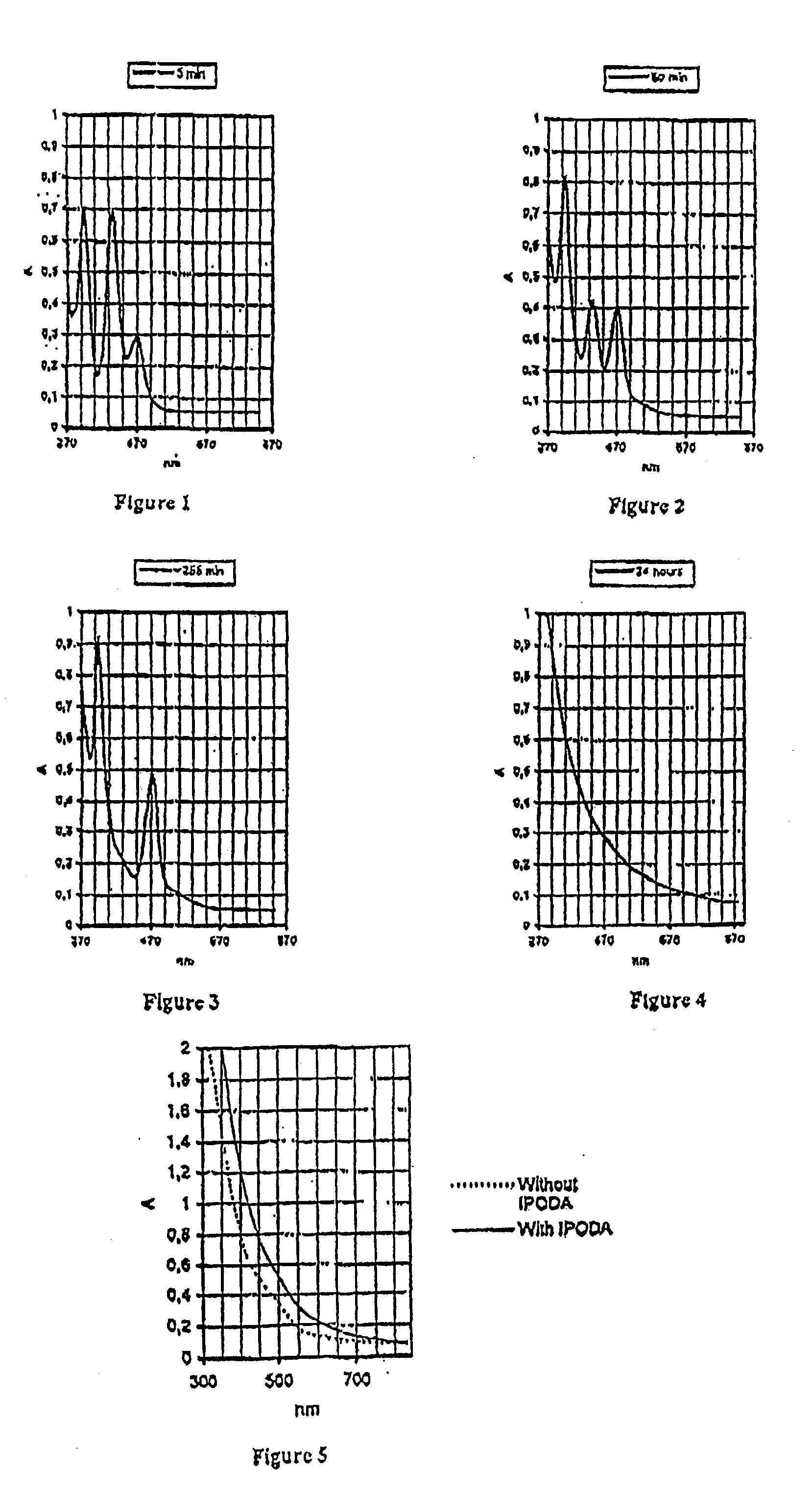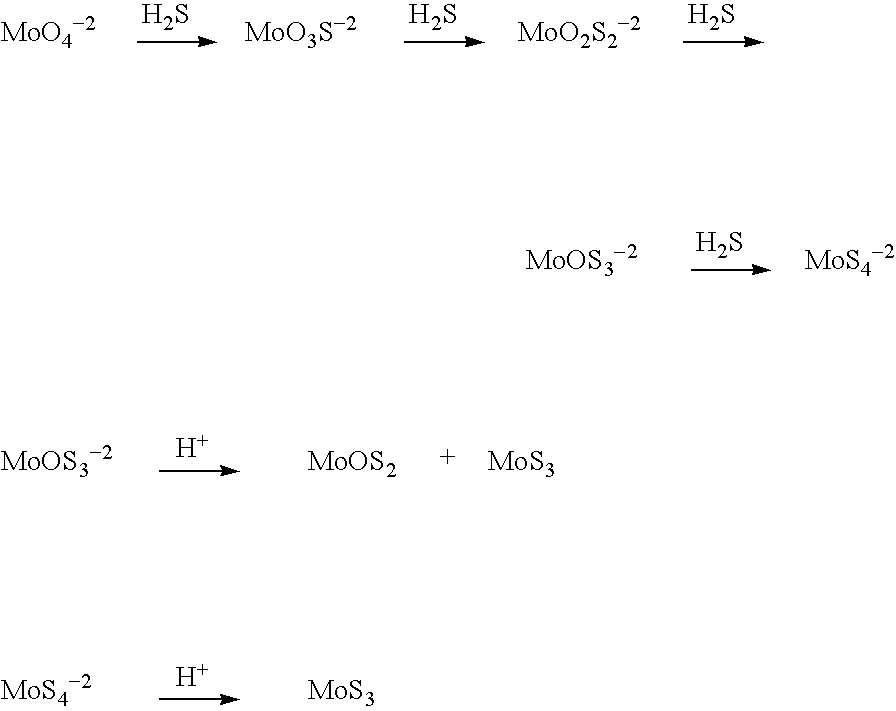Nanosized particles of molybdenum sulfide and derivatives,method for its preparation and uses thereof as lubricant additive
a technology of molybdenum sulfide and molybdenum sulfide, which is applied in the field of nanoparticles of molybdenum sulfide, can solve the problems of phosphorus limiting the service life of catalytic converters, ash forming in dialkyldithiophosphates, and poor solubility of molybdenum compounds in lubricant oils, so as to prevent the coagulation of nanop
- Summary
- Abstract
- Description
- Claims
- Application Information
AI Technical Summary
Benefits of technology
Problems solved by technology
Method used
Image
Examples
example 1
Isopropyloctadecylamine (IPODA)
Cetyltrimethylammonium bromide (0.652 g) was dissolved in 45 mL of chloroform and 100 μL of a saturated aqueous solution of (NH4)6Mo7O24.2H2O was added with stirring. The opaque solution was heated, then 20 mL of isooctane and 20 mL of chloroform were added, and 10 drops of concentrated aqueous HCl solution, resulting in a clear solution. Excess H2S was bubbled in until a weak yellow color was obtained, then 11 mL of a solution obtained by dissolving 0.577 g of isopropyloctadecylamine in 50 mL of chloroform (Mo:N˜1:5) was added. Three days later, all solvents were evaporated from the resulting dark solution containing small sediment, the residue was stirred with 30 mL tetrahydrofuran (THF), undissolved cetyltrimethylammonium bromide (CTAB) containing some MoS3 was filtered off, and the resulted dark clear solution was evaporated.
example 2
sec.-Butylamine
CTAB (0.757 g) was dissolved in 100 mL of chloroform and diluted with 100 mL of hexane. One hundred mL of saturated aqueous solution of (N4)6Mo7O24.2H2O was added with stirring, followed by 12 μL of concentrated aqueous HCl solution, which resulted in a clear solution. H2S was bubbled in over a one hour period until the color became gray-brown, then 30 μL of sec.-butylamine was added, whereupon the solution became a deep brown. Twenty-four hours later, all the solvents were evaporated from the dark solution, the residue was stirred with 15 mL of tetrahydrofuran (THF), undissolved CTAB containing some MoS3 was filtered off, and the resulting dark clear solution was evaporated to yield 0.1279 g of a dark substance.
example 3
Alkenyl Succinimide
Alkenyl succinimide (ASI, 1.7 mL) (the reaction product of Indapol H-1500 (polyisobutylene) with maleic anhydride, which is then reacted with triethylenetetraamine (TETA), (Uniroyal Chemical Company) solution (0.2185 g ASI in 5 mL chloroform) was dissolved in 100 mL of a 0.01M solution of CTAB in chloroform-hexane solution (1:1 v / v) with stirring. After 10 minutes, 0.05 mL of a saturated aqueous solution of (NH4)6Mo7O24 was added to produce an opaque microemulsion (ASI:Mo=1.6:1.1 by moles). Addition of approximately 8.5 μL of concentrated aqueous HCl resulted in a clear solution, into which excess H2S was bubbled. The color of the solution changed from green to brown and, after 24 hours, a brown precipitate formed. Organic solvents were evaporated under vacuum, the residue was stirred with 15 mL of freshly distilled THF, the undissolved matter was filtered off, and the THF was evaporated. The resulting residual brown substance (0.0523 g) was nanosized molybdenum...
PUM
| Property | Measurement | Unit |
|---|---|---|
| weight | aaaaa | aaaaa |
| water-soluble | aaaaa | aaaaa |
| hydrocarbon-soluble | aaaaa | aaaaa |
Abstract
Description
Claims
Application Information
 Login to View More
Login to View More - R&D
- Intellectual Property
- Life Sciences
- Materials
- Tech Scout
- Unparalleled Data Quality
- Higher Quality Content
- 60% Fewer Hallucinations
Browse by: Latest US Patents, China's latest patents, Technical Efficacy Thesaurus, Application Domain, Technology Topic, Popular Technical Reports.
© 2025 PatSnap. All rights reserved.Legal|Privacy policy|Modern Slavery Act Transparency Statement|Sitemap|About US| Contact US: help@patsnap.com



